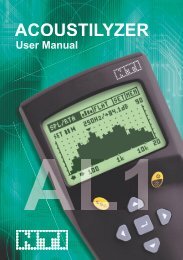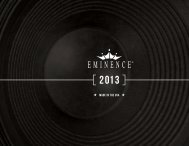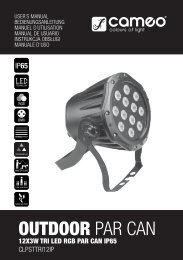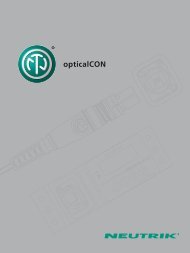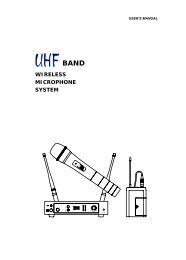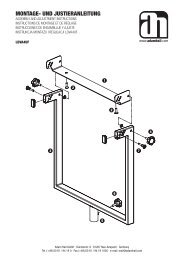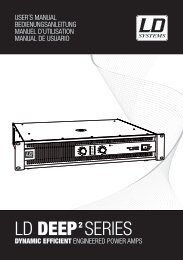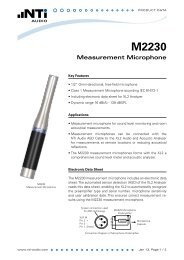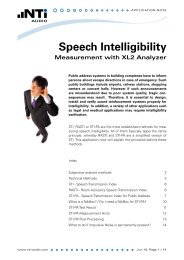OpticalCon
OpticalCon
OpticalCon
You also want an ePaper? Increase the reach of your titles
YUMPU automatically turns print PDFs into web optimized ePapers that Google loves.
9 Dust<br />
Object:<br />
Variations of attenuation due to massive dust penetration. The test was carried out with<br />
single mode cables where soiling of the connecting surface effects much more<br />
attenuation than at multi mode cables.<br />
The test was carried out by an independent laboratory: Electrosuisse, test laboratory<br />
PQ/PIK in 8320 Fehraltorf, Switzerland.<br />
Test Set-Up:<br />
The <strong>OpticalCon</strong> connector was exposed to dust from both sides in wired condition for<br />
60 minutes. The built-in sealing shutters protected the optical conductor at the front<br />
side, the plugged-in LC-Duplex connectors shielded the rear side.<br />
Test procedure according to IEC 61300-2-27 in combination with IEC 61753-1-1 Tab.<br />
A5 Test No.16 and IEC 61300-3-4 figure 4.<br />
Test specimen:<br />
NO2-4FD - Receptacle<br />
Particle size: d < 150 µm<br />
Dust type:<br />
talcum powder<br />
Temperature: 19°C<br />
Relative humidity: 54%<br />
Duration of penetration:<br />
1 h<br />
Test Instruments: light source EXFO FLS-600<br />
power meter EXFO FPM-600<br />
Launching cables:<br />
0.9 mm precision fibers<br />
Measuring wave lengths: single mode<br />
1,310 nm<br />
DUT cable length: single mode 2 m<br />
Technical Paper <strong>OpticalCon</strong> 20



